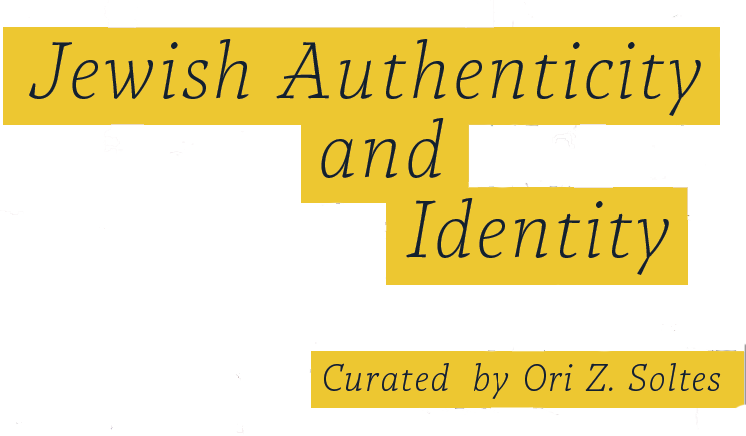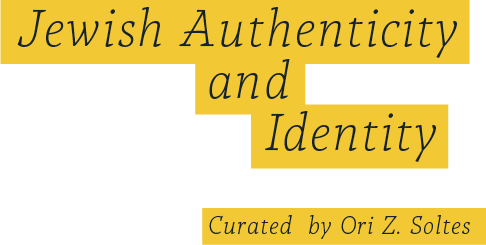![The artwork titled "Herzl" was created in 2012 by Hillel Smith. The artwork is a spray paint print on paper, 11 inches by 17 inches. The image depicts the bust of the Father of modern Zionism, Theodor Herzl, with his black hair and beard and his somewhat wistful look. The man's portrait is placed against a circular backdrop that suggests a halo bursting out of itself as a bolt of lightning. The print uses a burnt sienna color as well as a bright light blue. That same burnt sienna and a darker blue shape the letters inscribed beneath the iconic portrait: “if you will it, it will be no [mere] myth/dream.”](https://authenticityandidentity.com/wp-content/uploads/2021/03/4.8-Herzl-by-Hillel-Smith-1067x800.png)
“Herzl,” Hillel Smith, 2012, spray paint print on paper, 11″ x 17″
The visual engagement with Israel is very differently undertaken by Washington, DC artist, Hillel Smith, in his spray print on paper depiction of the Father of modern Zionism, Theodor Herzl. That unmistakable icon, with his rich head of black hair and beard and his somewhat wistful look—as if he knows that he will die young and well before his dream is fulfilled—is placed against a circular backdrop that suggests a halo bursting out of itself as a bolt of lightning. The burnt sienna color, invented for ceramicware by the Ottoman Turks around the same time that they took control of Palestine in the early sixteenth century, shares shading dynamism with the bright light blue derived from the fringes of the tallit that in turn found its way onto the Israeli flag (not by coincidence). That same burnt sienna and a darker blue shape the letters inscribed beneath the iconic portrait: “if you will it, it will be no [mere] myth/dream”—perhaps the best-known phrase associated with Herzl the dreamer.
Hillel Smith is an artist and designer focused on re-imagining the potential of Judaica by utilizing contemporary media to create new manifestations of traditional forms. He has painted dynamic Jewish murals in Southern California, Atlanta, Virginia, Minnesota, Jerusalem, and at the Fendi headquarters in Rome, Italy. He revitalizes ancient rituals with online projects, including the Best Omer Ever: GIF the Omer counter and Parsha Posters, encouraging creative reconsideration of religious practice. Seeing Hebrew as the visual glue that binds Jews together across time and space, he also teaches Jewish typographic history, using print as a lens for Jewish life and culture. Making fun and engaging content is similarly the crux of his work as a designer for clients including HIAS, PJ Library, and Patton Oswalt. To learn more about Hillel, check out his website hillelsmith.info and follow him on Instagram @thehillelsmith.

